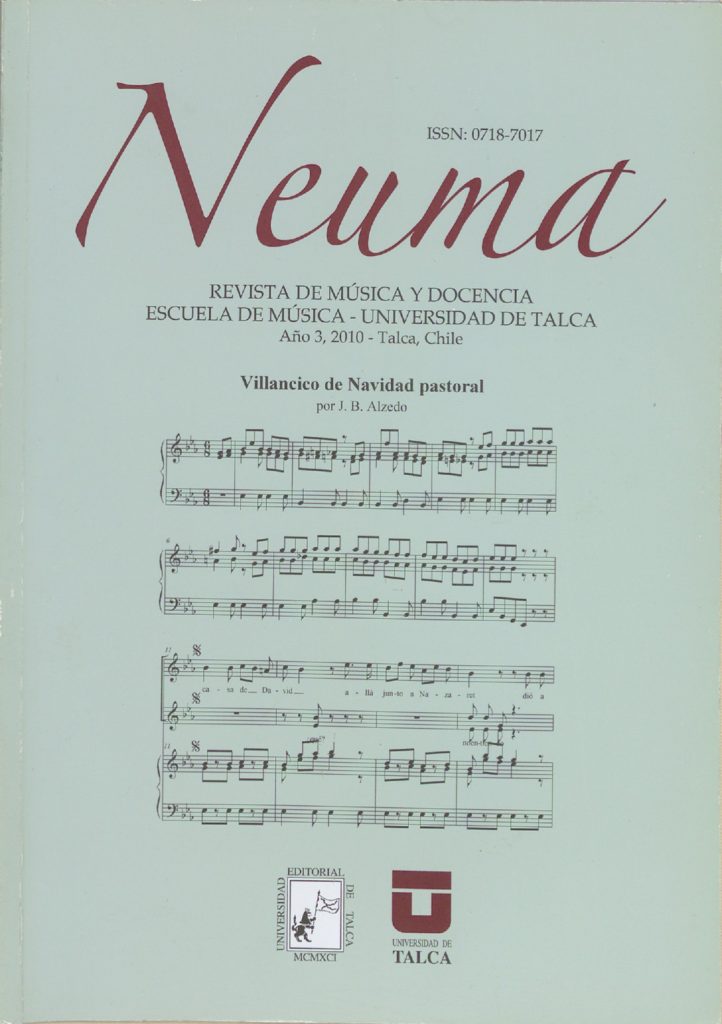Resumen
Este artículo es fruto de una investigación centrada en la creatividad existente en la música de Jazz durante los años 40 del siglo XX. La peculiar personalidad y esencia del Jazz, une creatividad e improvisación musical, compartiendo los mismos elementos constitutivos de la música clásica. Se puede demostrar que la improvisación en el Jazz depende de la creatividad, originalidad y competencia del jazzman. Un “improvisador” domina el vocabulario musical jazzístico, conoce su tradición y es capaz de enriquecerla e innovarla con personales habilidades musicales y capacidades creativas.
Citas
Alperson, P. (1984). “On Musical Improvisation”. En The Journal of Aesthetics and Art Criticism, Vol. 43, Nº. 1, pp. 17-29.
Berendt, J, E. (1962). El jazz: su origen y desarrollo. México: Fondo de Cultura Económica.
Brown, R. (1981). “How Improvised is Jazz Improvisation?”. En Jazz Research Papers (NAJE), pp. 22-32.
Brown, L. B. (Autumn, 1996). “Musical Works, Improvisation, and the principle of Continuity”. En The Journal of Aesthetics and Art Criticism, Vol. 54, No. 4, pp. 353-369.
Cameron, W.B. (Dec., 1954). “Sociological Notes on the Jam Session”. En Social Forces, Vol. 33 Nº. 2, pp. 177-182.
Deveaux, S. (Spring, 1989). “The Emergence of the Jazz Concert, 1935-1945”. En American Music, Vol. 7, Nº. 1, Special Jazz Issue, pp. 6-29.
Deveaux, S. (1991). “Constructing the Jazz Tradition: Jazz Historiography”. En Black American Literature Forum, Vol. 25, Issue 3, Literature of Jazz Issue, pp. 525-560.
Deveaux, S. (1997). The Birth of Bebop. A Social and Musical History. Los Ángeles: University of California Press.
Eco, U. (2001). La definición del arte. Barcelona: Destino.
Hemsy de Gainza, V. (1993). La improvisación musical. Ricordi Americana. Buenos Aires.
Hodeir, A. (1956). Jazz: Its evolution and essence. New York: Grove Press.
Hormigos Ruiz, J. (2008). Música y sociedad. Análisis sociológico de la cultura musical de la posmodernidad. Madrid: Autor.
Kernfeld, B. (2002). “Improvisation”, Grove Music Online ed. L. Macy (Accessed 13 March 2008), http://www.grovemusic.com
Panassie, H. (1939). Hot-jazz. Guía de la música swing. Santiago: Editorial Ercilla.
Peplowski, K. (Sep. – Oct., 1998): “The Process of Improvisation. Organization Science”. En Special Issue: Jazz Improvisation and Organizing, Vol. 9, Nº. 5, pp. 560- 561.
Porter, L. (1992). Jazz: from its origins to the present / by Lewis Porter and Michael Ullman with Ed Hazell. Upper Saddle River: Prentice Hall.
Schuller G. (1968). Early Jazz. Its Roots and musical development. New York: Oxford University Press.
Schuller G. (1989). The Swing Era. The Development of Jazz 1935-1945. New York: Oxford University Press.

Esta obra está bajo una licencia internacional Creative Commons Atribución-NoComercial 4.0.
Derechos de autor 2010 Neuma (Talca)


